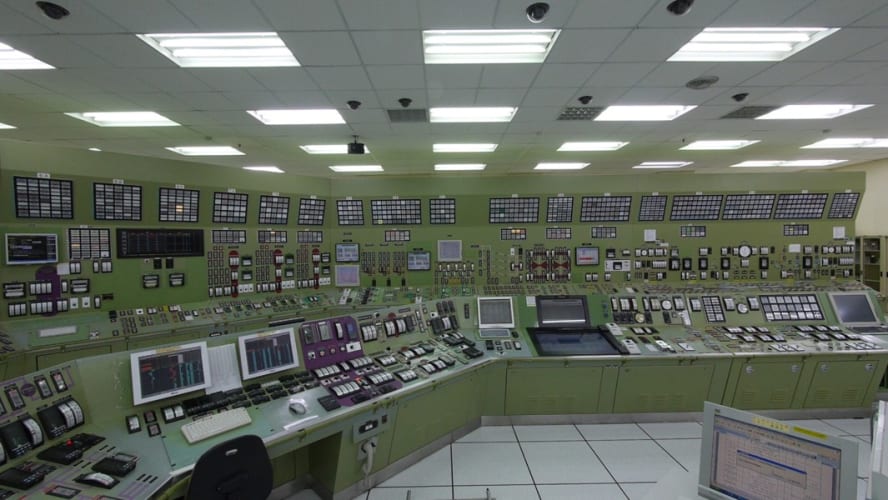Landscape of Energy, 2014
Hong Kong 2016

Chi-Wen Gallery
Video/Film
Single-channel Video, Colour, Stereo Sound, 7min 30sec
0Beginning in a forest at night, Landscape of Energy employs “scanning,” gliding linearly into a group of abandoned residential properties in Taichung, an Orchid Island elementary school, the ocean, a nuclear waste storage facility, the crowded South Bay of Pingtung which neighbors a nuclear power plant, the simulated control room inside the nuclear power plant, and Encore Garden, the so-called largest amusement park then in Asia. The camera returns to the deserted residential properties, panning over forsaken homes and unexpectedly comes upon an expanse of water, while Tokyo Bay gradually appears and disappears in the distance. Although the video documents the reality before our eyes, it exudes a cold sense of desolation that forebodes - like in a dream - the ruins of tomorrow.
On March 11, 2011, when the Fukushima Daiichi Nuclear Power Plant’s radiation leak took place, the brother-in-law of the artist’s Japanese wife was stranded, and the news left his family extremely anxious: Suddenly, nuclear power became a real issue in his home. After some research, he realized that the closest power plant from his residence is only 19 kilometers away, while the Presidential Office Building is a mere 30 kilometers away from its closest power plant. The whole island and its power plants are enveloped in an alarming uncanniness. Landscape of Energy continues his exploration of concepts such as “ruins,” “home,” and “dwelling” with a documentary approach, reflecting the unpoetic dwellings of today’s world — or more specifically, Taiwan. Although Heidegger’s words of “poetic dwelling” — an ideal of being at peace with the sky, earth, divinities, and mortals — still ring in our ears, one cannot seem to achieve this state.
Landscape of Energy (2014) was shown at 13th Biennale de Lyon : La Vie Moderne, Musée des Confluences, Lyon, France (2015). The work has been collected by Mori Art Museum, Tokyo, Japan.
Yuan Goang-Ming (b.1965) currently lives and works in Taipei. He is one of the foremost Taiwanese artists of media art, and has been a pioneer of video art in Taiwan, a medium in which he started working in 1986. He received a Master’s degree in media art from the Academy of Design, Karlsruhe in 1997. Combining symbolic metaphors with technological media, his work eloquently expresses the state of contemporary existence and profoundly explores the human mind and consciousness. His works, ranging from photographs to multi-media installations, have been exhibited worldwide, including 2004 Liverpool Biennial, Tate Modern, Liverpool, UK (2004), A Strange Heaven : Contemporary Chinese Photography, National Gallery of Prague, Czech Republic, Helsinki City Art Museum, Finland (2005), X-Generation : National Taiwan Museum of Digital Art Collection Exhibition, Engien-Les-Bain, France (2007), Our Future : The Guy & Myriam Ullens Foundation Collection, Ullens Center for Contemporary Art, Beijing (2008), Singapore Biennale 2008 : Wonder, Singapore (2008), In Between, Asian Video Art Weekend, Mori Art Museum, Tokyo, Japan (2008), the 7th Asia Pacific Triennial of Contemporary Art, Gallery of Modern Art and Queensland Art Gallery, Brisbane, Australia (2013), Schizophrenia Taiwan 2.0, Ars Electronica, Austria, Linz, CYBERFEST, Russia, St. Petersberg, Transmediale Germany, Berlin, HMKV Germany, Dortmund, Les Instant Video, France, Marseille (2014), Fukuoka Asian Art Triennale, Japan (2014), Mobile M+ : Moving Image, Midtown POP, Hong Kong (2015) and 13th Biennale de Lyon : La Vie Moderne, Musée des Confluences, Lyon, France (2015).